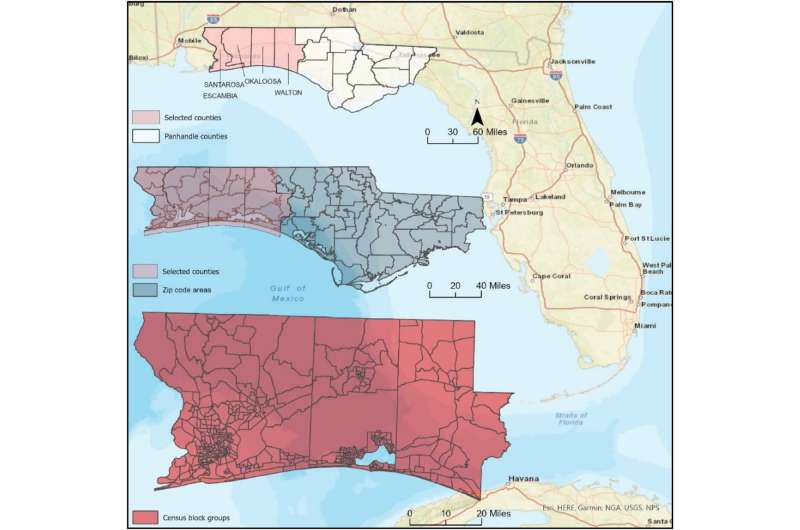This article has been reviewed according to Science X's editorial process and policies. Editors have highlighted the following attributes while ensuring the content's credibility:
fact-checked
trusted source
proofread
New model helps researchers locate best spots for field hospitals after disasters

FAMU-FSU College of Engineering researchers want Floridians to be prepared when the next pandemic or hurricane hits the state. A new study published in the International Journal of Disaster Risk Reduction examines the best locations for field hospitals that can supplement health care facilities when resources are stretched thin.
"One of the goals of RIDER is to look after our most vulnerable when disasters hit," said Eren Ozguven, director of the Resilient Infrastructure and Disaster Response Center. "Getting to a hospital in a disaster and having access to an ICU bed in time will save lives, and that's what we want to do."
Researchers examined four counties in the Florida Panhandle: Escambia, Santa Rosa, Okaloosa and Walton. The group mapped the area using a mathematical model to maximize accessibility and minimize travel time to determine the best location for field hospitals when ICU facilities are overburdened.
The goal is to help validate where resources are most needed and balance regional inequalities and social vulnerabilities.
"These four counties constitute most of the population and ICU bed demand in the Panhandle," Ozguven said. "We aim to determine the effectiveness of select locations to make it easier for residents to reach the amenities."
When the COVID-19 pandemic swept the globe, hospitals quickly bulged to capacity. People sometimes had to travel more than a hundred miles or more to find help. ICUs were limited and different communities had unequal access to resources, services, and goods.
The pandemic shed light on these inequities and provided the opportunity to find solutions. The new study focuses on Florida, but the results are wide-ranging and have global implications.
RIDER specializes in helping communities thrive in the wake of disasters. They focus on connecting real-life urban and rural communities to solutions. From the best place to locate a shelter to the best evacuation routes, the researchers provide resources for disaster response.
Ozguven led the international study with researchers from the FAMU-FSU College of Engineering, Florida State University and the University of Twente in the Netherlands. Onur Alisan, a postdoctoral researcher at the FAMU-FSU College of Engineering, is a co-author of the study.
He was a resilience fellow at the 4TU Resilience Engineering Center in the Netherlands while conducting research for this paper. Ozguven and Alisan completed the interdisciplinary work with Mark Horner, a professor from the FSU Department of Geography, and Mehmet Baran Ulak, an assistant professor from the University of Twente in the Netherlands.
More information: Onur Alisan et al, Location selection of field hospitals amid COVID-19 considering effectiveness and fairness: A case study of Florida, International Journal of Disaster Risk Reduction (2023). DOI: 10.1016/j.ijdrr.2023.103794




















